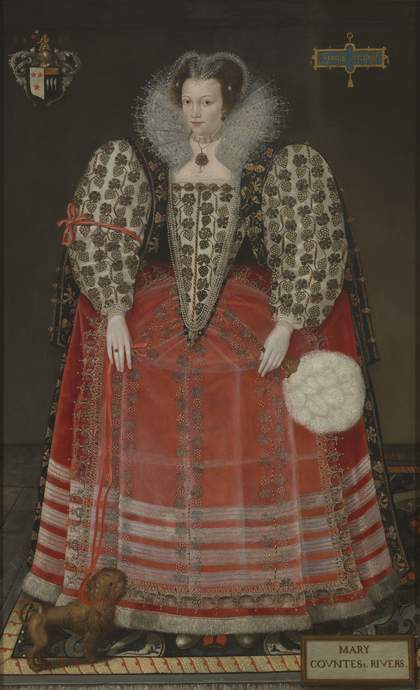
Fig.1
Unknown artist, Britain
Portrait of Mary Kytson, Lady Darcy of Chiche, later Lady Rivers
c.1590
Oil paint on canvas
2020 x 1243 mm
T15214
The painting (fig.1) is executed in oil paint on a plain weave canvas which has been lined, apparently with glue-paste.1 The original canvas has an additional strip of canvas added along the top edge.
The ground is not visible and its colour is not known.
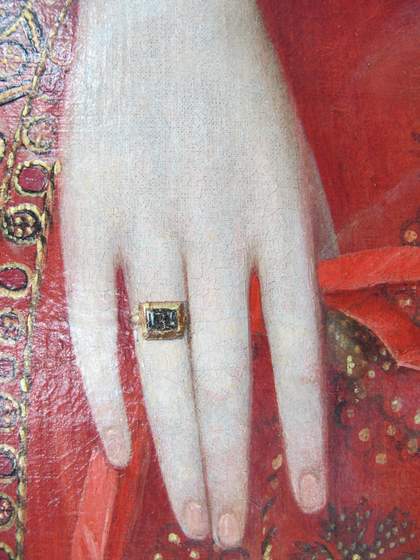
Fig.2
Detail of the proper right hand
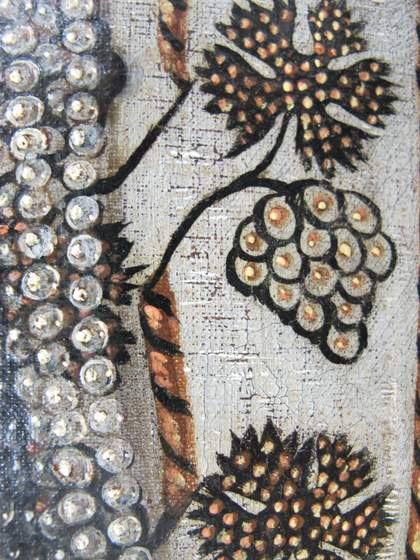
Fig.3
Detail of the long pearl necklace and the embroidered bodice
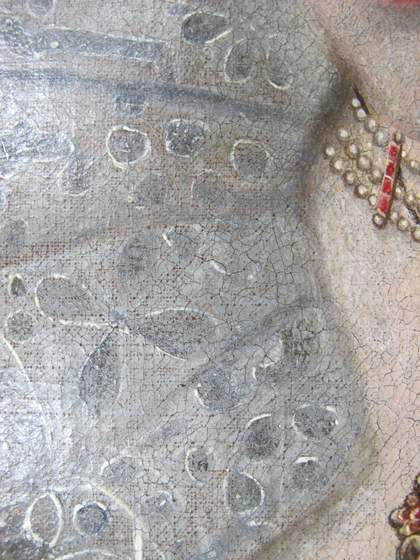
Fig.4
Detail of the ruff
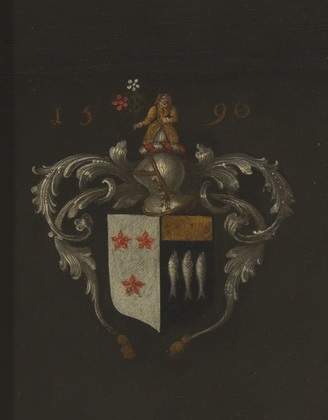
Fig.5
Detail showing the coat of arms
The paint was applied evenly and smoothly overall (fig.2), with areas of slight impasto used for highlights such as the pearls of the long necklace (fig.3), and the embroidered grapes on the bodice. Details such as the lace ruff (fig.4) and the shadows in the dress were depicted using thin, transparent glazes of paint. The costume was painted with great attention to detail and demonstrates an elaborate vine leaf and grape pattern (fig.3) for the bodice and sleeves. The coat of arms was painted with equal attention to detail (fig.5).
The paint surface was extensively restored in many areas prior to acquisition, especially at the hands and face. This degree of retouching, present particularly in the hair and in the darker colours which have been extensively strengthened, was done because the underlying paint is significantly abraded, to the extent that the tops of the canvas threads can be seen under low magnification in many areas, and to disguise drying cracks. There is prominent abrasion of the black paint in areas of detail such as the ruff. Most of the old retouching was executed with skill. Small areas of paint and ground have been lost, most obviously along the lower edge in the fridge of the carpet, and not retouched.
The varnish layer present when the painting was acquired fluoresces more prominently under ultraviolet light in the background, suggesting selective varnish removal in the past. The remaining varnish is slightly yellowed and of natural resin type, and darker varnish residues of earlier date can be seen in areas of light impasto. The varnish was surface cleaned to remove dirt in 2003, when some of the retouching had discoloured and appeared paler, for example in the red skirt and the face. Several of the areas of blanched retouching on the face were glazed in 2003 to reduce their impact. The whole painting was brush varnished with MS2A cyclohexanone varnish, then sprayed with stable Paraloid B-72 varnish followed by a final varnish of MS2A whose gloss was reduced with Cosmolloid wax.
The painting is framed in a black wooden frame with gold leaf detail.
March 2022
